This article appeared in shortened and edited format in Ecotextile News, October/November 2015 edition.
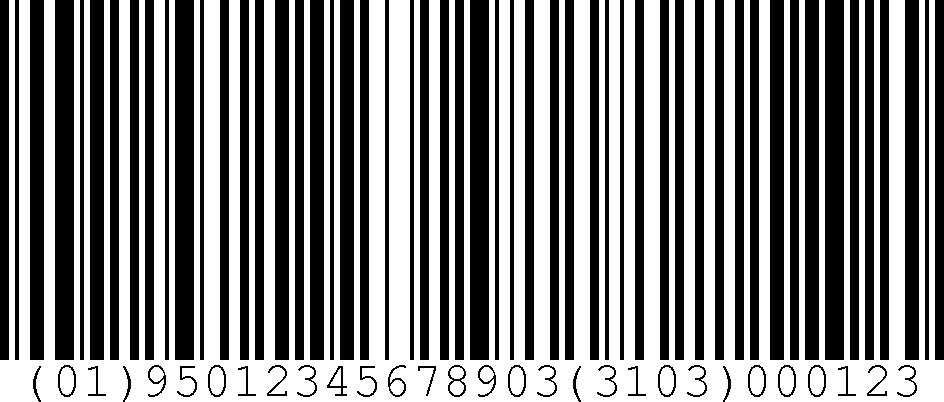
Barcodes, RFID tags, and QR codes have each introduced a new era of on-product information distribution and acquisition. Tills equipped with scanners, and stock taking procedures using the same approach, are state-of-the-art these days. RFID and/or barcode tagged in-process item tracking (e.g. Crystal Group), fully or semi-automated warehouses and shipping processes (notably Amazon (here, here), but also Mammut, Vaude), or in-store stock management (e.g. Levis, or a US underwear brand) are very nearly mainstream throughout our supply chains.
With that many technological solutions, and hence data points, in the life journey of a product that could potentially be leveraged, should traceability not be ‘a matter of course’ already?
In this article I would like to look at a family of digital solution components that many brands and manufacturers will already use and be reliant on, and that – if integrated – could be leveraged to provide full-depth traceability.
I will look at and explain the principle three corner stones of this solution and explain how these already form an existing basis for integrated traceability information.
A simple and illustrated T-shirt case study will then show how this works in practice.
GS1: From product codes to traceability
These days most supply chains work, to some extent or other, with technical achievements such as globally unique identifiers, barcodes, RFID tags, QR codes and the electronic exchange of data. Sometimes without realising, companies using these have entered the GS1 ‘Global Traceability Standard’ (GTS) universe, and therewith a technical approach that– at least conceptually – generates unique and complete visibility data for each individual step of the supply chain. This information could therefore be leveraged for traceability purposes.
But who are, and what is GS1? GS1 is a not-for-profit, international organisation that develops and maintains standards for supply and demand chains in multiple sectors. GS1 has local network organisations in over 110 countries, and works with their member community of trading partners, industry organisations, governments and technology providers, and in this way responds to business needs through the adoption and implementation of global standards. GS1 has more than one million member companies across the worlds that use these standards in over 6 billion transactions daily (history overview).
The technological standards that over time have developed from the humble barcode cover by now every stage of a product’s supply chain (cf. Figure 1):
- Identification: Standards for the identification of items, locations, shipments, assets that provide unique and complete information for each processing step.
- Capture: Standards for encoding and capturing data in physical data carriers such as barcodes, QR codes, RFID tags etc.
- Share: Standards for sharing and exchanging data between parties in a commonly agreed format and processes.
But how, specifically, do any of these standards and data formats apply and translate to the textile supply chain?
The following graphic (Figure 1, top) shows generically where such unique pieces of data are created, at the example of the three principally used identifiers (here for the full overview):
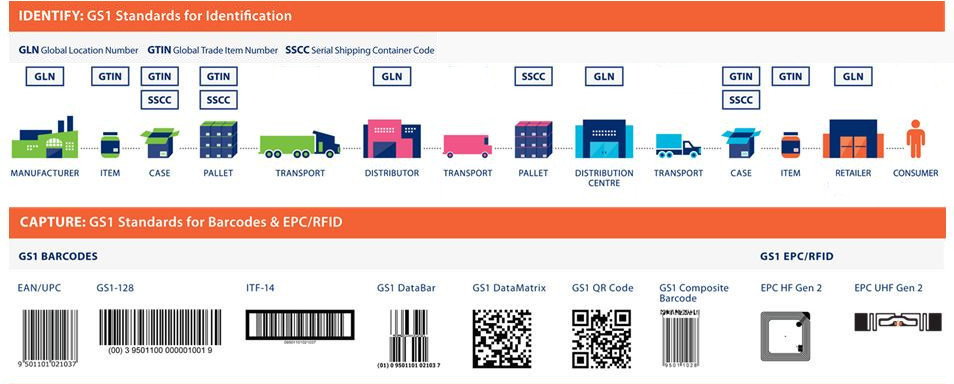
What kind of information do these unique identifiers convey at each stage of the product’s journey?
- The Global Location Number (GLN) uniquely identifies a company (e.g. a manufacturer, warehousing unit or a brand) or a physical location.
- The Global Trade Item Number (GTIN) uniquely identifies each raw, intermediate and finished product within a specific company’s product range. In combination with the product’s lot or serial number, a product can be traced back to the supplier and ascertained when it was manufactured.
- The Serial Shipping Container Code (SSCC) uniquely identifies each distributed logistics unit (e.g. products packaged together for storage or transport in a parcel).
The format of identifiers, physical data carriers, and data interchange methods, are publicly available.
Barcodes
and RFID tags are examples of physical data carriers for unique
identifiers such as the above listed.
What is important to note
at this point is: Neither barcode nor RFID tag are the carrier of the
actual data. Instead, they store one of the above identifiers
as access key to the principle
information, which in return then is stored in a suitable, and
commonly accessible, IT system.
This means that in order to progress from supply chain visibility to traceability, the data captured at specific steps in the supply chain first needs to be stored in a commonly agreed data exchange platform, and then linked with one another.
GS1 offers one commercial platform to do so (fTrace, currently available for meat, fish, fruits and vegetables). Other service providers, as well as proprietary solutions, are expected to follow suit given that the underlying standard definitions are publicly available.
Crucial in this context:
The information contained in the data trail created by GTS standards is un-vetted and un-interpreted. In other words: Once linked, the obtained traceability chain does, for instance not make away with audits that reconcile mass balances commonly used to confirm authenticity of organic cotton or other materials. Instead, the data contains the information based on which such mass balance reconciliation can take place.
However, the outcome of such reconciliation can be stored in the common IT system, and referred to through GTINs in the forward chain. It could in this way potentially offer an alternative to the transaction certificate method currently most commonly used to ensure the integrity of raw materials.
The traceable cotton T-shirt: Application use case
The table at the end of this section illustrates the use of the above-mentioned three principle identifiers when applied to the life journey of a cotton T-shirt.
As becomes apparent, the T-shirt’s main components can be tracked back, in a step-by-step process, through to origins of the supply chain: In this specific example, through to the facility of the cotton processor. This is also possible if a garment consists of multiple ingredient components; as for instance would be the case for an outdoor jacket that includes zips, buttons, and multiple layers of fabric.
Further, once the data is integrated into a decentralised data management platform the 1-step-up, 1-step-down approach to traceability becomes much more holistic: It then allows for direct access to traceability data from any one point in the supply chain to any other point, e.g. from the customer directly to the cotton processor information.
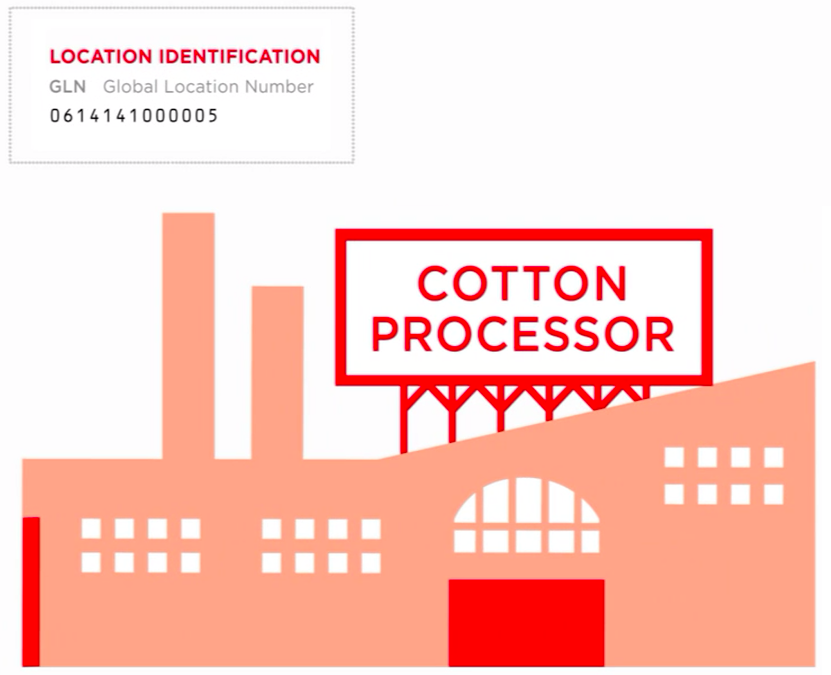 |
The cotton
processor is identified through a unique Global Location Number
(GLN). Together with the cotton bale number, this allows to
unmistakably identify from where (farm or agent) the cotton was
purchased.
|
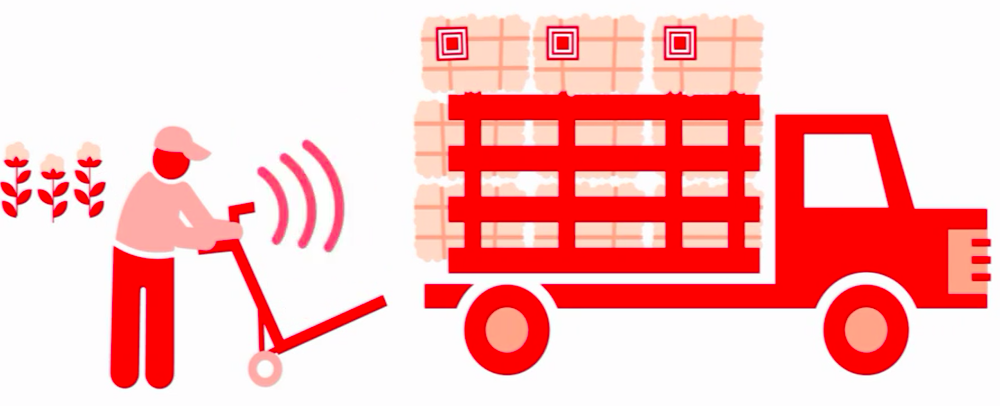 |
When the cotton
is passed on to the integrated fabric manufacturer, barcodes or
RFID on the packaging are used to access the above information, as
it is stored in a suitable IT system.
A similar process
happens later on when fabrics, or garments, are being shipped
between different locations.
|
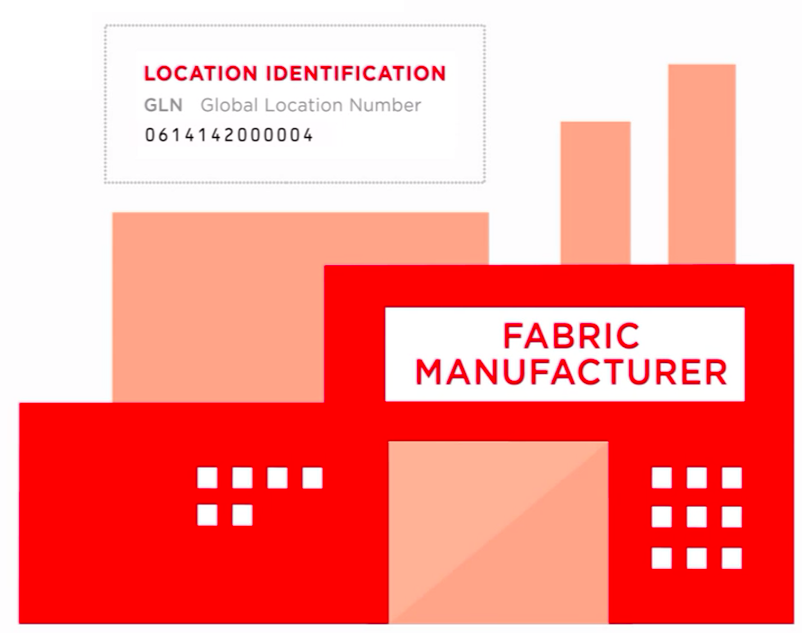 |
The integrated
fabric manufacturer is again in possession of a unique GLN
|
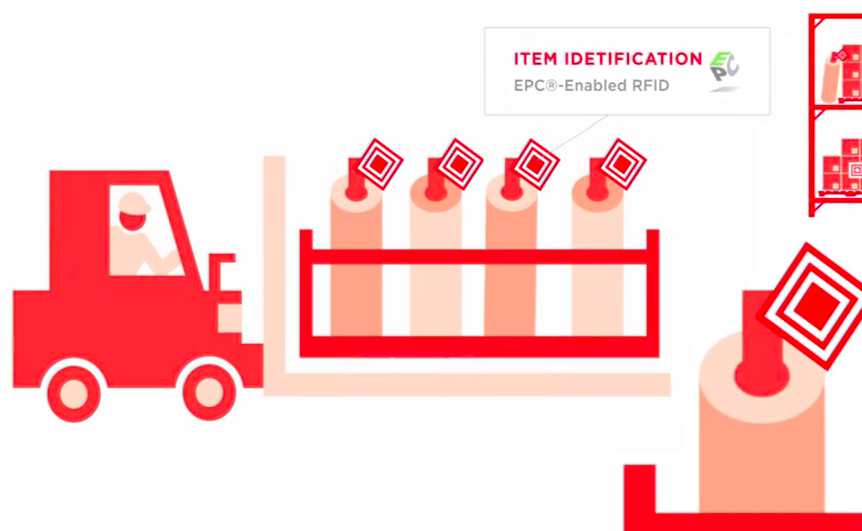 |
Each role of fabric produced is identified
with a serialised Global Trade Item Number (GITN) that sets it
apart from any other role the fabric manufacturer has ever, or
will ever, produce. The combination of GLN, GTIN and batch number allows therefore globally to identify the fabric’s manufacturing location and the time frame the role was produced in. |
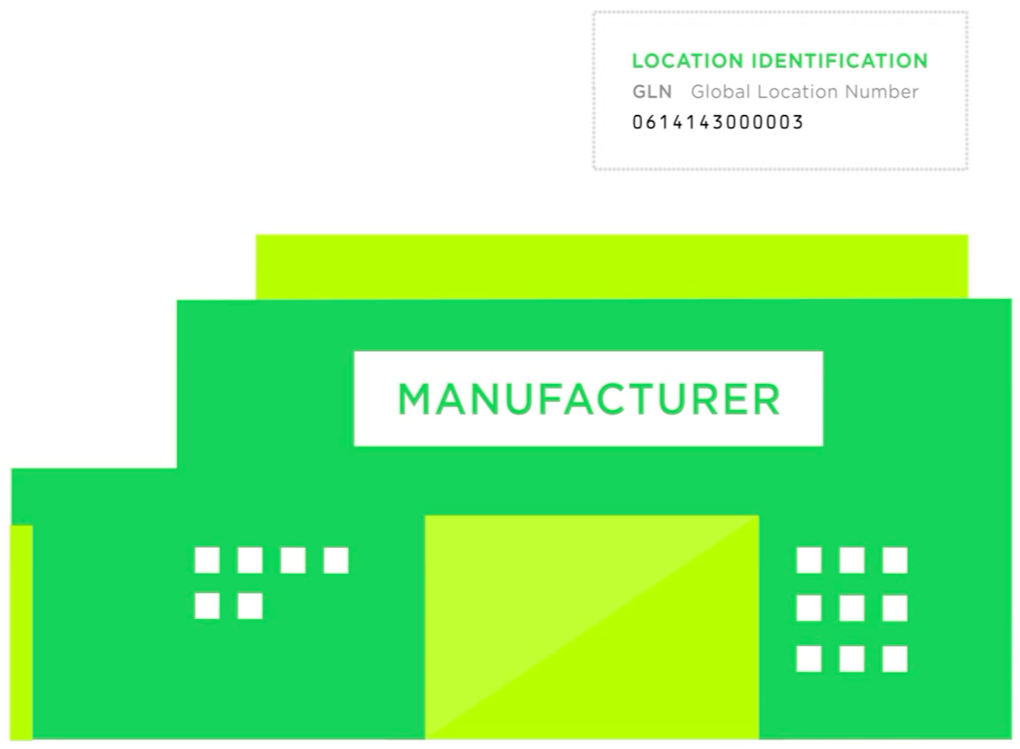 |
The CMT unit once
again owns a globally unique GLN.
|
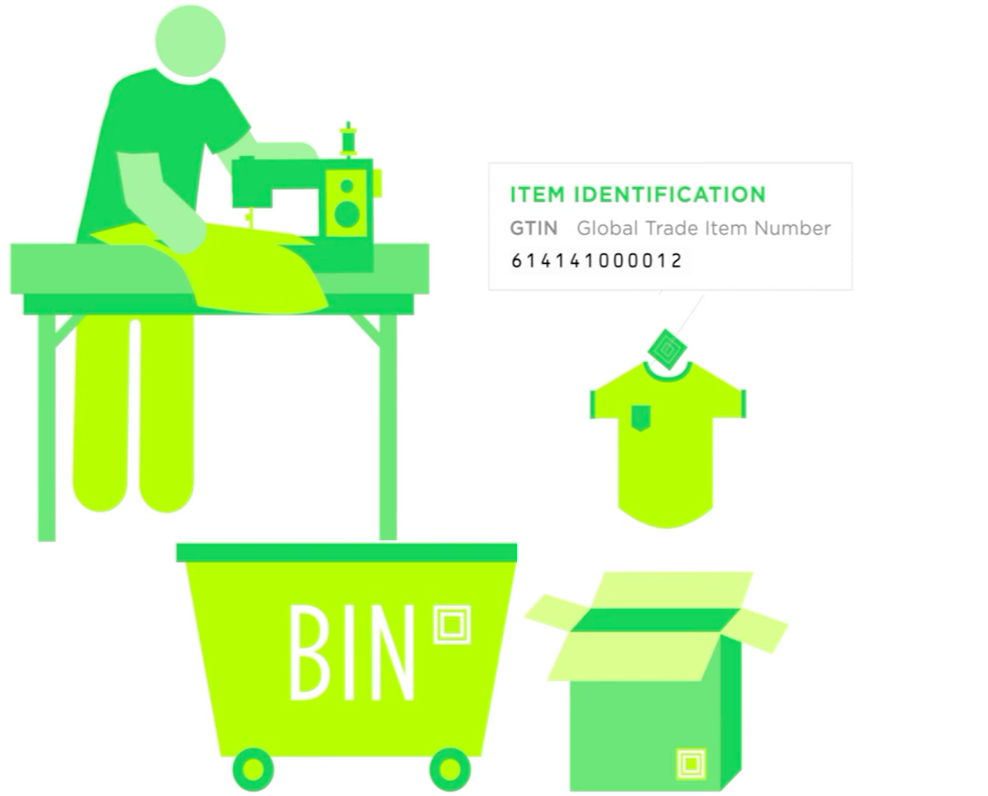 |
Each individual
T-shirt manufactured will receive a GTIN. GLN and GTIN combined with a lot or serial number allow the global identification of manufacturer and time frame of the T-shirts production. |
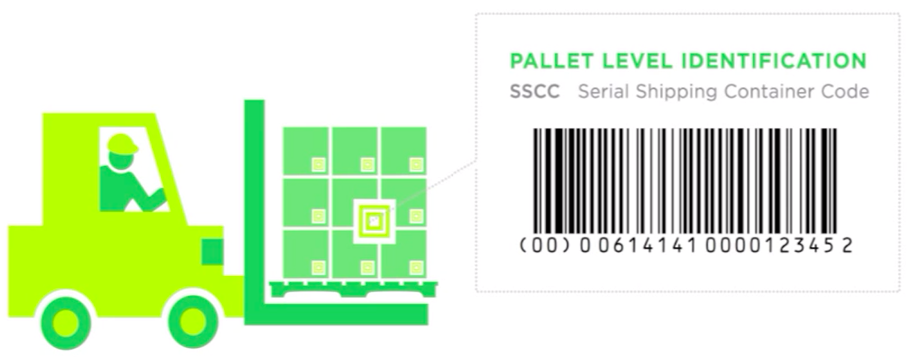 |
The Serial
Shipping Container Code (SSCC) identifies each shipping container
uniquely on a global level. Combining SSCCs, GTINs and GLN is the point of departure for the underlying IT platform to identify what products, and from which manufacturer(s), are contained in a specific logistics unit. |
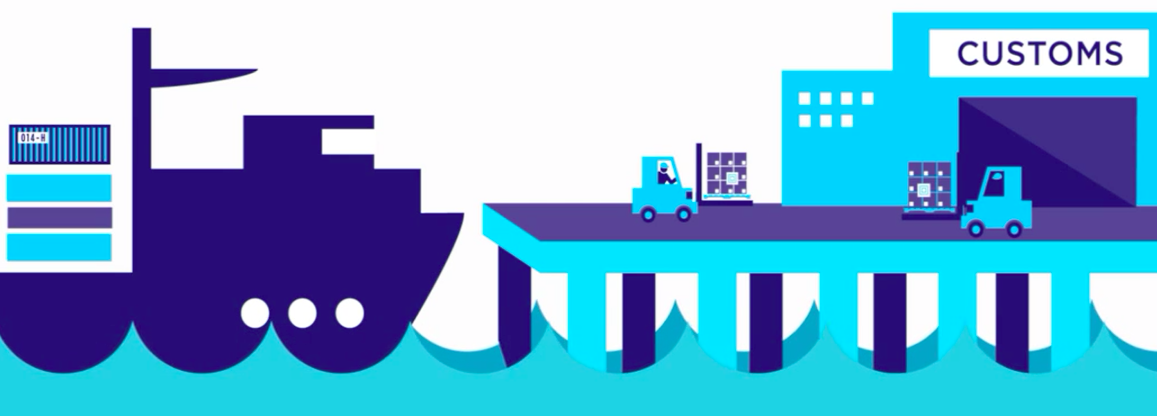 | This information can then be used for shipping and customs paper work and checks. |
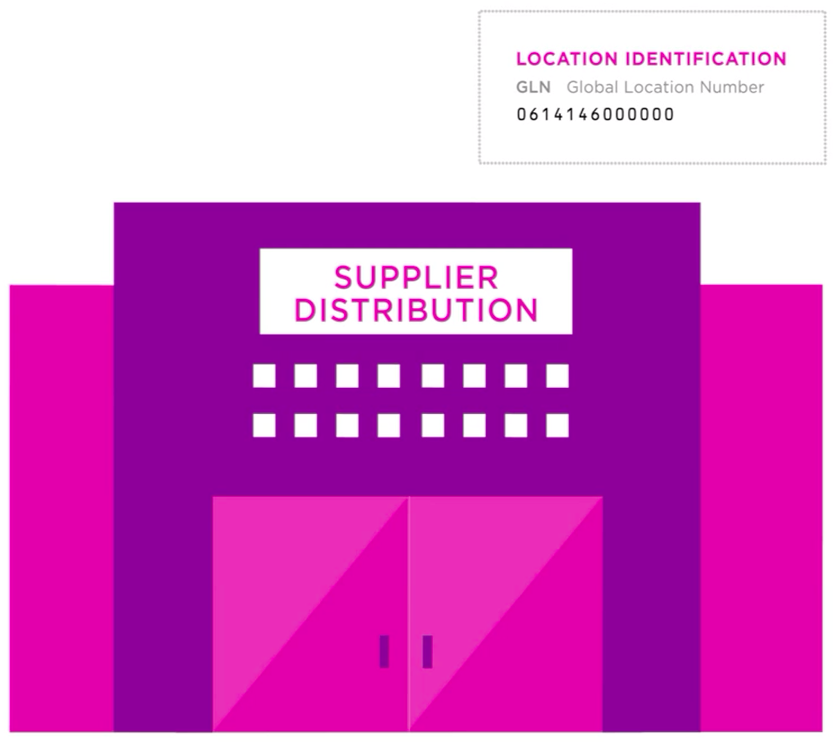 |
Once the
container has passed through customs, it is delivered to a
distribution centre, which again is uniquely identified through a
GLN. The distribution centre will be able to use the same information as the customs office to manage the stocks of incoming warehoused T-shirts. |
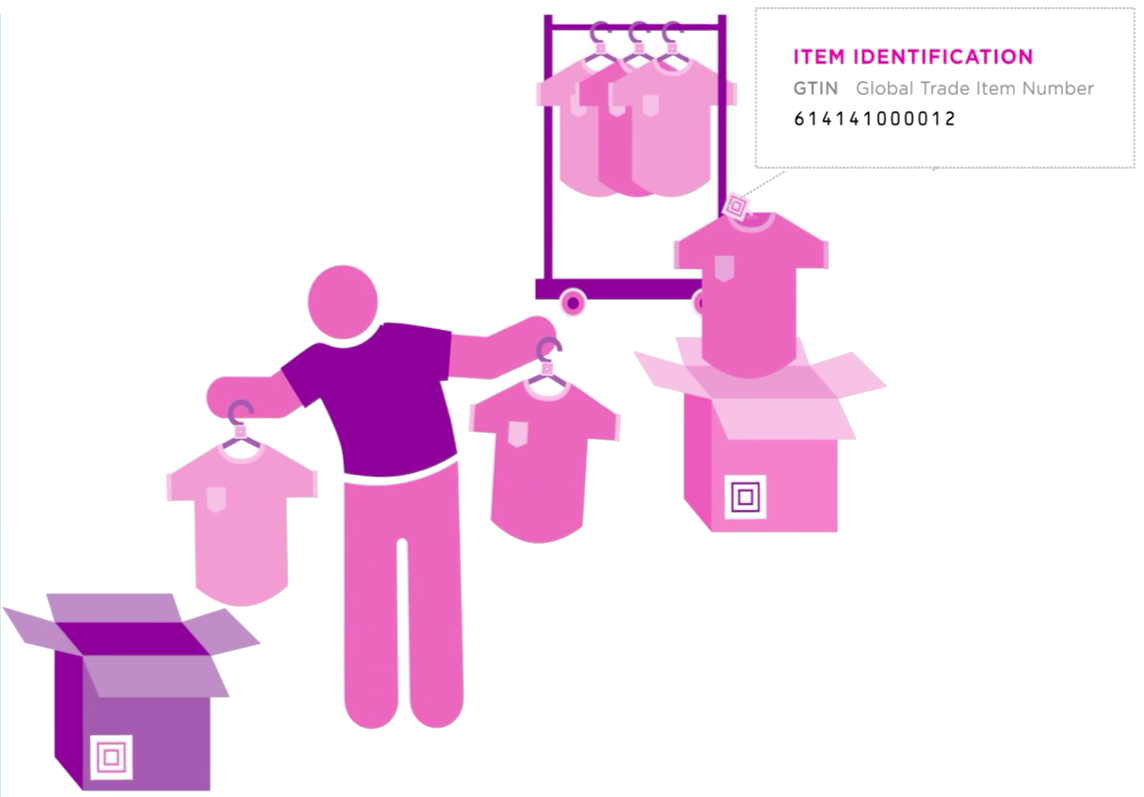 |
Using this
information the T-shirts that arrived from overseas are repacked
into boxes for shipping to retail. Each T-shirt therefore is still
carrying the GTIN number it was allocated at the CMT supplier.
|
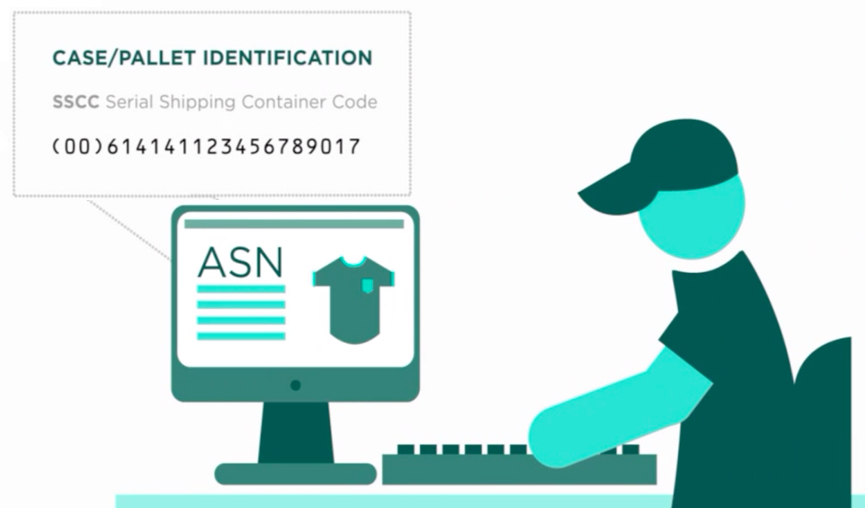 |
Each box is given
a unique SSCC number again, and all GTINs of T-shirts contained in
the box, are recorded.
|
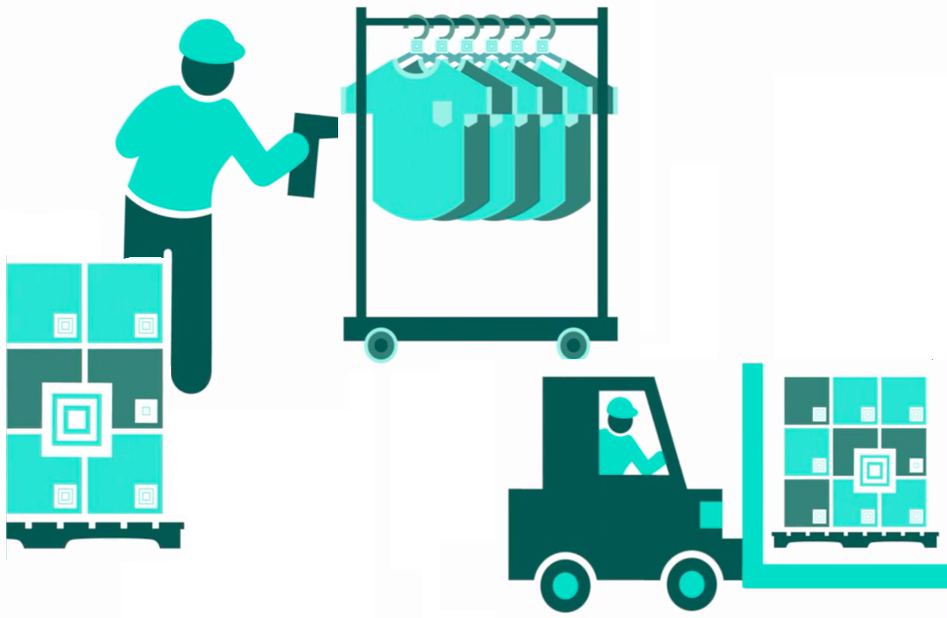 |
The boxes, tagged
with all the information, are then shipped to the retailer.
|
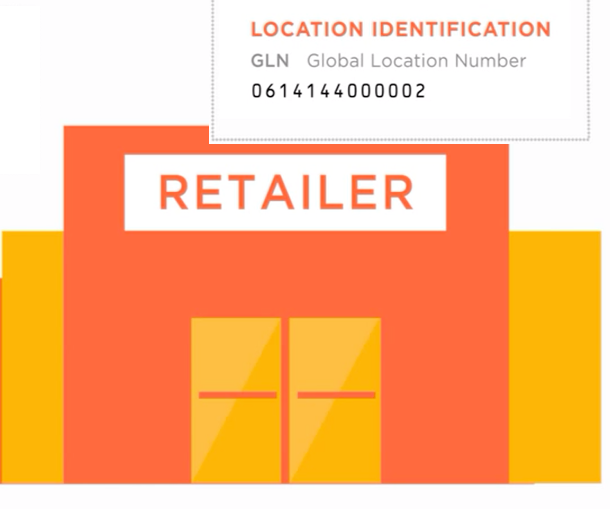 | The retailer also owns a GLN, so that the shipping company knows exactly where to deliver the boxed-up T-shirts to. |
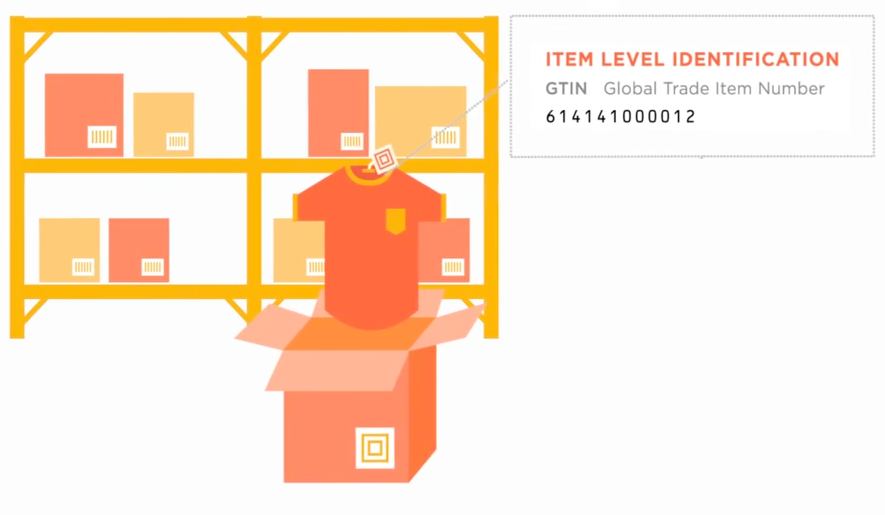 | The retailer, using the data on the RFID tags on the boxes and on the packed items, can then retrieve the relevant information for warehousing, and managing stocks and their retail space from the shared IT platform. They can also use the information to verify that the complete order has been delivered and received. |
Table 1: Stages in the application of GS1 identifiers to the production journey of a cotton T-shirt. Pictures © GS1
With this kind of information available at each processing step, the only missing piece in this jigsaw is an application system or platform (such as fTrace and others mentioned above) that brings it all together, and in this way creates a single, integrated traceability thread.
Once such a system is put in place and integrates all the different pieces of data, and with all the information recorded along the life journey of this T-shirt, it will be possible for end-consumers to identify not only where their T-shirt was sewn, but even from which farm the cotton in the T-shirt originally came from.
| Identifier name | Description | Format |
| GLN | Global Location Number: The GLN uniquely identifies a company’s physical locations, for example a store, a warehouse, or a berth in a port. It can also be used to identify an organisation as a corporate entity. |  |
| GTIN |
Global
Trade Item Number
The
GTIN is used
to
uniquely identify all of a company’s trade items. GTS defines
trade items as products or services that are priced, ordered or
invoiced at any point in the supply chain.
In
textiles/apparel, the GTIN needs to be combined with a lot or
serial number in order to provide visibility along the value
chain.
|  |
| SSCC | Serial Shipping Container Code The SSCC uniquely identifies each distributed logistics unit. A logistics unit can be any combination of trade items packaged together for storage and/or transport purposes; for example a case, pallet or parcel. |  |
Table 2: The 3 main unique identifiers relevant for providing product visibility across the textile/apparel supply chain: Abbreviation, definition and format. Images © GS1
Conclusion
Traceability remains a challenging topic. How much detailed data do we need, before we can generate meaningful information? And just because we can record information, does this imply that we should do so?
While none of these questions have lead to a generally accepted agreement yet, there is no doubt that new technologies have progressively come into use at critical supply chain stages: be it for work in progress at the supplier, or in semi- or fully automated warehouses.
In this article we looked at one technological suite of standards and identifiers, commonly used for tracking production of items, including garments, when warehousing and in the retail setting, and that could be leveraged to provide a high degree of traceability information.
There are however challenges that come with it.
The apparel industry has a record of drifting towards ever cheaper, and therefore low-tech, sourcing countries. This in turn means that integrated automation will likely not consistently be available, and manual work will be required – annihilating in this way any hope that traceability may ‘efficiently’ and ‘effectively’ become a scaled out reality rather sooner than later.
Acquiring, managing and using large amounts of data further comes with privacy and usefulness concerns: when will we stop seeing the wood for the trees? And is more data really equivalent to more information and insights?
This all said – the surprising insight from researching this article is actually the following:
Many, many more suppliers, brands and retailers are already immersed in the GS1 universe of identifiers and standards for one reason or another: whether it is their fully automated warehouse, their use of product bar- or QR codes, or RFID to manage the ‘work in progress’ process or the facilitate stock management at the retail stage. It would make only sense to try, and leverage and integrate the already collected information in the best possible way so as to enable traceability to reach as far as we can with what we have already.

